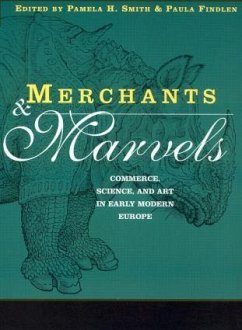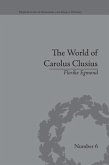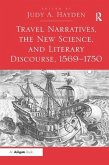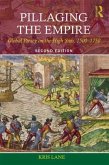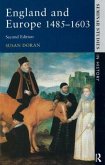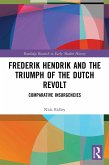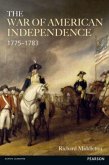Paula Findlen (ed.)Commerce, Science, and Art in Early Modern Europe
Merchants and Marvels
Commerce, Science, and Art in Early Modern Europe
Herausgeber: Smith, Pamela; Findlen, Paula
Paula Findlen (ed.)Commerce, Science, and Art in Early Modern Europe
Merchants and Marvels
Commerce, Science, and Art in Early Modern Europe
Herausgeber: Smith, Pamela; Findlen, Paula
- Broschiertes Buch
- Merkliste
- Auf die Merkliste
- Bewerten Bewerten
- Teilen
- Produkt teilen
- Produkterinnerung
- Produkterinnerung
Merchants and Marvels addresses how ideas about the representation of nature, in both art and science, underwent a profound transformation between the age of the Renaissance and the early 1700s.
Andere Kunden interessierten sich auch für
![The World of Carolus Clusius The World of Carolus Clusius]() Florike EgmondThe World of Carolus Clusius52,99 €
Florike EgmondThe World of Carolus Clusius52,99 €![Travel Narratives, the New Science, and Literary Discourse, 1569-1750 Travel Narratives, the New Science, and Literary Discourse, 1569-1750]() Travel Narratives, the New Science, and Literary Discourse, 1569-1750208,99 €
Travel Narratives, the New Science, and Literary Discourse, 1569-1750208,99 €![Pillaging the Empire Pillaging the Empire]() Kris E LanePillaging the Empire47,99 €
Kris E LanePillaging the Empire47,99 €![England and Europe 1485-1603 England and Europe 1485-1603]() Susan DoranEngland and Europe 1485-160362,99 €
Susan DoranEngland and Europe 1485-160362,99 €![Frederik Hendrik and the Triumph of the Dutch Revolt Frederik Hendrik and the Triumph of the Dutch Revolt]() Nick Ridley (UK Liverpool John Moores University)Frederik Hendrik and the Triumph of the Dutch Revolt63,99 €
Nick Ridley (UK Liverpool John Moores University)Frederik Hendrik and the Triumph of the Dutch Revolt63,99 €![On the Eighteenth Century as a Category of Asian History On the Eighteenth Century as a Category of Asian History]() Leonard BlusseOn the Eighteenth Century as a Category of Asian History168,99 €
Leonard BlusseOn the Eighteenth Century as a Category of Asian History168,99 €![The War of American Independence The War of American Independence]() Richard MiddletonThe War of American Independence57,99 €
Richard MiddletonThe War of American Independence57,99 €-
-
-
Merchants and Marvels addresses how ideas about the representation of nature, in both art and science, underwent a profound transformation between the age of the Renaissance and the early 1700s.
Hinweis: Dieser Artikel kann nur an eine deutsche Lieferadresse ausgeliefert werden.
Hinweis: Dieser Artikel kann nur an eine deutsche Lieferadresse ausgeliefert werden.
Produktdetails
- Produktdetails
- Verlag: Taylor & Francis Ltd
- Seitenzahl: 452
- Erscheinungstermin: 12. Oktober 2001
- Englisch
- Abmessung: 229mm x 152mm x 24mm
- Gewicht: 642g
- ISBN-13: 9780415928168
- ISBN-10: 0415928168
- Artikelnr.: 22368157
- Herstellerkennzeichnung
- Libri GmbH
- Europaallee 1
- 36244 Bad Hersfeld
- gpsr@libri.de
- Verlag: Taylor & Francis Ltd
- Seitenzahl: 452
- Erscheinungstermin: 12. Oktober 2001
- Englisch
- Abmessung: 229mm x 152mm x 24mm
- Gewicht: 642g
- ISBN-13: 9780415928168
- ISBN-10: 0415928168
- Artikelnr.: 22368157
- Herstellerkennzeichnung
- Libri GmbH
- Europaallee 1
- 36244 Bad Hersfeld
- gpsr@libri.de
Pamela H. Smith is Associate Professor of History at Pomona College and the Claremont Graduate University. She is the author of The Business of Alchemy: Science andCulture in the Holy Roman Empire, winner of the 1995 Pfizer Prize in the History of Science. Paula Findlen is Professor of History and Director of the Science, Technology and Society Program at Stanford University. She is the author of Possessing Nature: Museums, Collecting, and Scientific Culture in Early Modern Italy, winner of the 1995 Marroro Prize in Italian History and 1996 Pfizer Prize in the History of Science.
Acknowledgments Introduction:Commerce and the Representation of Nature in
Art and Science Pamela H. Smith and Paula Findlen Part 1. STRUGGLING WITH
REALITY: Visualizing Nature and Producing Knowledge 1. Splendor in the
Grass: The Powers of Nature and Art in the Age of Durer Larry Silver and
Pamela H. Smith 2. Objects of Art/Objects of Nature: Visual Representation
and the Investigation of Nature Pamela O. Long 3. Mirroring the World: Sea
Charts: Navigation and Territorial Claims Alison Sandman 4. From Blowfish
to Flower Still Life Paintings: Classification and Its Images, circa 1600
Claudia Swan 5. Strange Ideas and English Knowledge: Natural Science
Exchange in Elizabethan London Deborah E. Harkness Part 2. NETWORKS OF
KNOWLEDGE: Commerce and the Representation of Nature 6. Local Herbs, Global
Medicines: Commerce, Knowledge and Commodities in Spanish America Antonio
Barrera 7. Merchants and Marvels: Hans Jacob Fugger and the Origins of the
Wunderkammer Mark A. Meadow 8. Practical Alchemy and Commercial Exchange in
the Holy Roman Empire Tara E. Nummedal 9. Time's Bodies: Crafting the
Preparation and Preservation of Naturalia Harold J. Cook 10. Cartography,
Entrepreneurialism and Power in the Reign of Louis XIV: The Case of the
Canal du Midi Chandra Mukerji 11. 'Cornelius Meijer inventor et fecit': On
the Representation of Science in Late Seventeenth-Century Rome Klass van
Berkel Part 3. CONSUMPTION, ART AND SCIENCE 12. Inventing Nature: Commerce,
Art and Science in the Early Modern Cabinet of Curiosities Paula Findlen
13. Nature as Art: The Case of the Tulip Anne Goldgar 14. Inventing
Exoticism: The Project of Dutch Geography and the Marketing of the World,
circa 1700 Benjamin Schmidt 15. Shopping for Instruments in Paris and
London James A. Bennett EPILOGUES A World of Wonders, A World of One Lissa
Roberts Questions of Representation Thomas DaCosta Kaufmann Contributors
Index
Art and Science Pamela H. Smith and Paula Findlen Part 1. STRUGGLING WITH
REALITY: Visualizing Nature and Producing Knowledge 1. Splendor in the
Grass: The Powers of Nature and Art in the Age of Durer Larry Silver and
Pamela H. Smith 2. Objects of Art/Objects of Nature: Visual Representation
and the Investigation of Nature Pamela O. Long 3. Mirroring the World: Sea
Charts: Navigation and Territorial Claims Alison Sandman 4. From Blowfish
to Flower Still Life Paintings: Classification and Its Images, circa 1600
Claudia Swan 5. Strange Ideas and English Knowledge: Natural Science
Exchange in Elizabethan London Deborah E. Harkness Part 2. NETWORKS OF
KNOWLEDGE: Commerce and the Representation of Nature 6. Local Herbs, Global
Medicines: Commerce, Knowledge and Commodities in Spanish America Antonio
Barrera 7. Merchants and Marvels: Hans Jacob Fugger and the Origins of the
Wunderkammer Mark A. Meadow 8. Practical Alchemy and Commercial Exchange in
the Holy Roman Empire Tara E. Nummedal 9. Time's Bodies: Crafting the
Preparation and Preservation of Naturalia Harold J. Cook 10. Cartography,
Entrepreneurialism and Power in the Reign of Louis XIV: The Case of the
Canal du Midi Chandra Mukerji 11. 'Cornelius Meijer inventor et fecit': On
the Representation of Science in Late Seventeenth-Century Rome Klass van
Berkel Part 3. CONSUMPTION, ART AND SCIENCE 12. Inventing Nature: Commerce,
Art and Science in the Early Modern Cabinet of Curiosities Paula Findlen
13. Nature as Art: The Case of the Tulip Anne Goldgar 14. Inventing
Exoticism: The Project of Dutch Geography and the Marketing of the World,
circa 1700 Benjamin Schmidt 15. Shopping for Instruments in Paris and
London James A. Bennett EPILOGUES A World of Wonders, A World of One Lissa
Roberts Questions of Representation Thomas DaCosta Kaufmann Contributors
Index
Acknowledgments Introduction:Commerce and the Representation of Nature in
Art and Science Pamela H. Smith and Paula Findlen Part 1. STRUGGLING WITH
REALITY: Visualizing Nature and Producing Knowledge 1. Splendor in the
Grass: The Powers of Nature and Art in the Age of Durer Larry Silver and
Pamela H. Smith 2. Objects of Art/Objects of Nature: Visual Representation
and the Investigation of Nature Pamela O. Long 3. Mirroring the World: Sea
Charts: Navigation and Territorial Claims Alison Sandman 4. From Blowfish
to Flower Still Life Paintings: Classification and Its Images, circa 1600
Claudia Swan 5. Strange Ideas and English Knowledge: Natural Science
Exchange in Elizabethan London Deborah E. Harkness Part 2. NETWORKS OF
KNOWLEDGE: Commerce and the Representation of Nature 6. Local Herbs, Global
Medicines: Commerce, Knowledge and Commodities in Spanish America Antonio
Barrera 7. Merchants and Marvels: Hans Jacob Fugger and the Origins of the
Wunderkammer Mark A. Meadow 8. Practical Alchemy and Commercial Exchange in
the Holy Roman Empire Tara E. Nummedal 9. Time's Bodies: Crafting the
Preparation and Preservation of Naturalia Harold J. Cook 10. Cartography,
Entrepreneurialism and Power in the Reign of Louis XIV: The Case of the
Canal du Midi Chandra Mukerji 11. 'Cornelius Meijer inventor et fecit': On
the Representation of Science in Late Seventeenth-Century Rome Klass van
Berkel Part 3. CONSUMPTION, ART AND SCIENCE 12. Inventing Nature: Commerce,
Art and Science in the Early Modern Cabinet of Curiosities Paula Findlen
13. Nature as Art: The Case of the Tulip Anne Goldgar 14. Inventing
Exoticism: The Project of Dutch Geography and the Marketing of the World,
circa 1700 Benjamin Schmidt 15. Shopping for Instruments in Paris and
London James A. Bennett EPILOGUES A World of Wonders, A World of One Lissa
Roberts Questions of Representation Thomas DaCosta Kaufmann Contributors
Index
Art and Science Pamela H. Smith and Paula Findlen Part 1. STRUGGLING WITH
REALITY: Visualizing Nature and Producing Knowledge 1. Splendor in the
Grass: The Powers of Nature and Art in the Age of Durer Larry Silver and
Pamela H. Smith 2. Objects of Art/Objects of Nature: Visual Representation
and the Investigation of Nature Pamela O. Long 3. Mirroring the World: Sea
Charts: Navigation and Territorial Claims Alison Sandman 4. From Blowfish
to Flower Still Life Paintings: Classification and Its Images, circa 1600
Claudia Swan 5. Strange Ideas and English Knowledge: Natural Science
Exchange in Elizabethan London Deborah E. Harkness Part 2. NETWORKS OF
KNOWLEDGE: Commerce and the Representation of Nature 6. Local Herbs, Global
Medicines: Commerce, Knowledge and Commodities in Spanish America Antonio
Barrera 7. Merchants and Marvels: Hans Jacob Fugger and the Origins of the
Wunderkammer Mark A. Meadow 8. Practical Alchemy and Commercial Exchange in
the Holy Roman Empire Tara E. Nummedal 9. Time's Bodies: Crafting the
Preparation and Preservation of Naturalia Harold J. Cook 10. Cartography,
Entrepreneurialism and Power in the Reign of Louis XIV: The Case of the
Canal du Midi Chandra Mukerji 11. 'Cornelius Meijer inventor et fecit': On
the Representation of Science in Late Seventeenth-Century Rome Klass van
Berkel Part 3. CONSUMPTION, ART AND SCIENCE 12. Inventing Nature: Commerce,
Art and Science in the Early Modern Cabinet of Curiosities Paula Findlen
13. Nature as Art: The Case of the Tulip Anne Goldgar 14. Inventing
Exoticism: The Project of Dutch Geography and the Marketing of the World,
circa 1700 Benjamin Schmidt 15. Shopping for Instruments in Paris and
London James A. Bennett EPILOGUES A World of Wonders, A World of One Lissa
Roberts Questions of Representation Thomas DaCosta Kaufmann Contributors
Index

